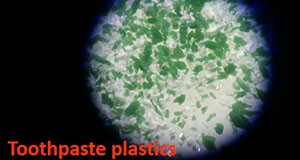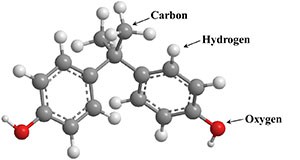
Plastic, plastic everywhere! We live in a world where we are surrounded by plastic: from packaging materials and cutlery to plastic appliances and medical devices. Since the mid-twentieth century, plastic has been a boon to humanity and an integral part of our modern lives. However, plastic debris is a major concern due to its abundance and persistence in the environment. Plastic contaminants not only include plastic debris characterized by large size but also small pieces of plastic in the millimeter size range; these inconspicuous “microplastics” have become a major concern because of their widespread presence in different environments and diverse organisms. This six-page fact sheet discusses the sources of microplastics, their effects on the environment, and ways to minimize microplastics pollution and exposure. Written by Yun-Ya Yang, Ignacio A. Rodriquez, Maia McGuire, and Gurpal S. Toor, and published by the Soil and Water Science Department.
http://edis.ifas.ufl.edu/ss649
Tag: Gurpal S. Toor
Contaminants in the Urban Environment: Bisphenol-A

Bisphenol-A (BPA) is a man-made chemical widely used as a component in many products of daily use in households, such as plastic bottles and metallic canned foods. BPA can leach from bottles and cans into the environment, increasing our exposure to BPA. BPA is known to harm exposed animals in laboratory settings as well as in the wild, although its potential to harm humans remains controversial. This seven-page fact sheet will discuss the occurrence, use, and potential harmful effects of BPA and will suggest ways to reduce human and environmental exposure to BPA. Written by Ignacio A. Rodriquez-Jorquera, Yun Ya Yang, and Gurpal S. Toor and published by the Soil and Water Science Department.
http://edis.ifas.ufl.edu/ss648
Contaminantes en el Medio Ambiente Urbano: Los Perfluoroalquilos
 Los perfluoroalquilos–los perfluorocarbonos (PFC) o, en inglés, perfluoroalkyl substances (PFASs)–son los productos químicos artificiales más comunes y persistentes en el planeta. Algunos de los productos más comunes que contienen perfluoroalquilos son sartenes de teflón, utensilios de cocina antiadherente, chaquetas impermeables (como Gore-Tex), espumas de extinción de incendios, envases de alimentos, alfombras y telas para muebles. Los perfluoroalquilos poseen un largo tiempo de residencia en el medio ambiente, lo que significa que los perfluoroalquilos pueden acumularse en los organismos en niveles que causan efectos nocivos.
Los perfluoroalquilos–los perfluorocarbonos (PFC) o, en inglés, perfluoroalkyl substances (PFASs)–son los productos químicos artificiales más comunes y persistentes en el planeta. Algunos de los productos más comunes que contienen perfluoroalquilos son sartenes de teflón, utensilios de cocina antiadherente, chaquetas impermeables (como Gore-Tex), espumas de extinción de incendios, envases de alimentos, alfombras y telas para muebles. Los perfluoroalquilos poseen un largo tiempo de residencia en el medio ambiente, lo que significa que los perfluoroalquilos pueden acumularse en los organismos en niveles que causan efectos nocivos.
This 6-page fact sheet is the Spanish language version of Contaminants in the Urban Environment: Perfluoroalkyl Substances, written by Ignacio A. Rodriguez-Jorquera and Gurpal S. Toor, and published by the UF Department of Soil and Water Science, June 2015.
http://edis.ifas.ufl.edu/ss644
Feature image credit: iStock/Thinkstock.com (non-stick pan, waterproof fabric, and fire fighting foam)/Digital Vision/Thinkstock.com (fast food)
Contaminants in the Urban Environment: Dioxins
 Dioxins are among the most toxic chemicals on the earth. They are by-products of a number of human activities such as combustion of fuels and wastes containing polyvinyl chloride (PVC), chlorine bleaching of paper products, and selected industrial processes. Current releases of dioxins by humans are due to the combustion of fuels and burning of household trash. The good news is that levels of dioxins in the environment have decreased in the United States throughout the past 30 years due to the improved emission controls and regulatory activities. But dioxins break down slowly, so they remain in the environment for a long time and accumulate in the food chain. Long-term exposure to dioxins can harm immune system, nervous system, endocrine system, and reproductive functions. This 7-page fact sheet discusses the sources, emission trends, and impacts of dioxins as well as the ways to minimize exposure to dioxins. Written by Yun-Ya Yang and Gurpal S. Toor, and published by the UF Department of Soil and Water Science, July 2015.
Dioxins are among the most toxic chemicals on the earth. They are by-products of a number of human activities such as combustion of fuels and wastes containing polyvinyl chloride (PVC), chlorine bleaching of paper products, and selected industrial processes. Current releases of dioxins by humans are due to the combustion of fuels and burning of household trash. The good news is that levels of dioxins in the environment have decreased in the United States throughout the past 30 years due to the improved emission controls and regulatory activities. But dioxins break down slowly, so they remain in the environment for a long time and accumulate in the food chain. Long-term exposure to dioxins can harm immune system, nervous system, endocrine system, and reproductive functions. This 7-page fact sheet discusses the sources, emission trends, and impacts of dioxins as well as the ways to minimize exposure to dioxins. Written by Yun-Ya Yang and Gurpal S. Toor, and published by the UF Department of Soil and Water Science, July 2015.
http://edis.ifas.ufl.edu/ss642
Contaminants in the Urban Environment: Perfluoroalkyl Substances
 Perfluoroalkyl substances (PFASs) or perfluorochemicals (PFCs) are the most widespread and persistent manmade chemicals on earth. Common products that contain PFASs are Teflon pans, non-stick cookware, rain/waterproof jackets (like Gore-Tex), fire-fighting foams, food packaging, carpets, and furniture fabrics. PFASs stay in the environment for a long period of time, which means they can accumulate in organisms to levels that cause harmful effects. This 9-page fact sheet discusses the occurrence, use, exposure, and potential harmful effects of PFASs to humans and the environment, and suggests ways to reduce your exposure to PFSAs. Written by Ignacio A. Rodriguez-Jorquera and Gurpal S. Toor, and published by the UF Department of Soil and Water Science, March 2015. (Photos: Thinkstock.com)
Perfluoroalkyl substances (PFASs) or perfluorochemicals (PFCs) are the most widespread and persistent manmade chemicals on earth. Common products that contain PFASs are Teflon pans, non-stick cookware, rain/waterproof jackets (like Gore-Tex), fire-fighting foams, food packaging, carpets, and furniture fabrics. PFASs stay in the environment for a long period of time, which means they can accumulate in organisms to levels that cause harmful effects. This 9-page fact sheet discusses the occurrence, use, exposure, and potential harmful effects of PFASs to humans and the environment, and suggests ways to reduce your exposure to PFSAs. Written by Ignacio A. Rodriguez-Jorquera and Gurpal S. Toor, and published by the UF Department of Soil and Water Science, March 2015. (Photos: Thinkstock.com)
http://edis.ifas.ufl.edu/ss631
Contaminants in the Urban Environment: Pharmaceuticals and Personal Care Products (PPCPs), Parts 1 and 2
 Pharmaceuticals and personal care products contain a variety of chemical substances that enter household wastewater from bath and shower, sinks, and washers and ultimately find their way into the environment. Continuous discharge of wastewater contributes to the accumulation of these substances in the environment — where they can be harmful to organisms. These fact sheets were written by Yun-Ya Yang and Gurpal S. Toor, and published by the UF Department of Soil and Water Science, March 2015. (Photo: iStock/Thinkstock.com)
Pharmaceuticals and personal care products contain a variety of chemical substances that enter household wastewater from bath and shower, sinks, and washers and ultimately find their way into the environment. Continuous discharge of wastewater contributes to the accumulation of these substances in the environment — where they can be harmful to organisms. These fact sheets were written by Yun-Ya Yang and Gurpal S. Toor, and published by the UF Department of Soil and Water Science, March 2015. (Photo: iStock/Thinkstock.com)
Part 1 provides an overview of the use and sale of PPCPs in the United States and the world: http://edis.ifas.ufl.edu/ss632
Part 2 discusses the sources and impacts of PPCPs and offers common-sense ways we can protect our environment from PPCPs.
http://edis.ifas.ufl.edu/ss633
Solutions for Managing Tomato Culls in Florida Tomato Packinghouses (SL371/SS572)
 Florida is the single largest producer of fresh-market tomatoes in the United States. Driven by urbanization and generation of large amounts of tomato culls, tomato packers in Florida often struggle to find ways to dispose of culls generated during the cleaning and sanitizing of tomatoes. This 5-page fact sheet provides guidelines for appropriate management practices to increase the use of culls produced in tomato packinghouses in Florida. Written by Gurpal Toor, Maninder Chahal, and Bielinski Santos, and published by the UF Department of Soil and Water Science, September 2012.
Florida is the single largest producer of fresh-market tomatoes in the United States. Driven by urbanization and generation of large amounts of tomato culls, tomato packers in Florida often struggle to find ways to dispose of culls generated during the cleaning and sanitizing of tomatoes. This 5-page fact sheet provides guidelines for appropriate management practices to increase the use of culls produced in tomato packinghouses in Florida. Written by Gurpal Toor, Maninder Chahal, and Bielinski Santos, and published by the UF Department of Soil and Water Science, September 2012.
http://edis.ifas.ufl.edu/ss572
Solutions for Managing Wastewater in Florida Tomato Packinghouses (SL372/SS573)
 A large amount of wastewater is produced in Florida's packinghouses during the cleaning and sanitizing of tomatoes. High transportation costs for off-site disposal and strict surface water discharge regulations are critical issues associated with the management of this wastewater. This 4-page fact sheet provides solutions for increasing the reuse of wastewater in tomato packinghouses in Florida. Written by Gurpal Toor, Maninder Chahal, and Bielinski Santos, and published by the UF Department of Soil and Water Science, August 2012.
A large amount of wastewater is produced in Florida's packinghouses during the cleaning and sanitizing of tomatoes. High transportation costs for off-site disposal and strict surface water discharge regulations are critical issues associated with the management of this wastewater. This 4-page fact sheet provides solutions for increasing the reuse of wastewater in tomato packinghouses in Florida. Written by Gurpal Toor, Maninder Chahal, and Bielinski Santos, and published by the UF Department of Soil and Water Science, August 2012.
http://edis.ifas.ufl.edu/ss573
Small-Scale Natural Wastewater Treatment Systems: Principles and Regulatory Framework (SL365/SS566)
 Natural systems use the natural processes of wetland ecosystems to both transform and hold on to many of the common pollutants that occur in household wastewater. This 8-page fact sheet briefly describes the principles and added benefits of natural systems. It then focuses on their use for treating small municipal wastewater flows from commercial and residential sites (i.e., septic systems or decentralized wastewater systems). Written by Kiara Winans, Shanin Speas-Frost, Mike Jerauld, Mark Clark, and Gurpal Toor, and published by the UF Department of Soil and Water Science, May 2012.
Natural systems use the natural processes of wetland ecosystems to both transform and hold on to many of the common pollutants that occur in household wastewater. This 8-page fact sheet briefly describes the principles and added benefits of natural systems. It then focuses on their use for treating small municipal wastewater flows from commercial and residential sites (i.e., septic systems or decentralized wastewater systems). Written by Kiara Winans, Shanin Speas-Frost, Mike Jerauld, Mark Clark, and Gurpal Toor, and published by the UF Department of Soil and Water Science, May 2012.
http://edis.ifas.ufl.edu/ss566
Onsite Sewage Treatment and Disposal Systems: Trace Organic Chemicals (SL352/SS554)
 Trace organic chemicals are potentially harmful to human and ecosystem health. They frequently occur in wastewater from septic systems and can be found in concentrations orders of magnitude higher than typical concentrations reported in centralized treatment plant wastewater. This 7-page fact sheet identifies common trace organic chemicals of concern in wastewater and their sources, and summarizes current research on the fate and transport of these chemicals in septic systems. Written by Gurpal S. Toor, Mary Lusk, and Tom Obreza, and published by the UF Department of Soil and Water Science, November 2011. (photo CC BY-SA 3.0 Mila)
Trace organic chemicals are potentially harmful to human and ecosystem health. They frequently occur in wastewater from septic systems and can be found in concentrations orders of magnitude higher than typical concentrations reported in centralized treatment plant wastewater. This 7-page fact sheet identifies common trace organic chemicals of concern in wastewater and their sources, and summarizes current research on the fate and transport of these chemicals in septic systems. Written by Gurpal S. Toor, Mary Lusk, and Tom Obreza, and published by the UF Department of Soil and Water Science, November 2011. (photo CC BY-SA 3.0 Mila)
http://edis.ifas.ufl.edu/ss554
Onsite Sewage Treatment and Disposal Systems: Viruses (SL351/SS553)
 Keeping disease-causing microorganisms out of groundwater used for drinking water supplies is important to protect human health. This 7-page fact sheet characterizes the behavior of viruses in septic systems and the soil drain field and summarizes what we know about the extent and character of groundwater contamination with viruses emanating from septic systems. Written by Mary Lusk, Gurpal S. Toor, and Tom Obreza, and published by the UF Department of Soil and Water Science, October 2011.
Keeping disease-causing microorganisms out of groundwater used for drinking water supplies is important to protect human health. This 7-page fact sheet characterizes the behavior of viruses in septic systems and the soil drain field and summarizes what we know about the extent and character of groundwater contamination with viruses emanating from septic systems. Written by Mary Lusk, Gurpal S. Toor, and Tom Obreza, and published by the UF Department of Soil and Water Science, October 2011.
http://edis.ifas.ufl.edu/ss553
Accounting for the Nutrients in Reclaimed Water for Landscape Irrigation (AE479)
 This 8-page fact sheet presents basic information for those using reclaimed water to irrigate lawns and landscapes. The information can serve as a guide to determine whether there is an opportunity to replace some of the fertilizer that might otherwise be applied and to offer guidance on avoiding runoff and leaching of excess nutrients. Written by Christopher J. Martinez, Mark W. Clark, Gurpal S. Toor, George J. Hochmuth, and Lawrence R. Parsons, and published by the UF Department of Agricultural and Biological Engineering, August 2011. (UF/IFAS photo by Marisol Amador)
This 8-page fact sheet presents basic information for those using reclaimed water to irrigate lawns and landscapes. The information can serve as a guide to determine whether there is an opportunity to replace some of the fertilizer that might otherwise be applied and to offer guidance on avoiding runoff and leaching of excess nutrients. Written by Christopher J. Martinez, Mark W. Clark, Gurpal S. Toor, George J. Hochmuth, and Lawrence R. Parsons, and published by the UF Department of Agricultural and Biological Engineering, August 2011. (UF/IFAS photo by Marisol Amador)
http://edis.ifas.ufl.edu/ae479
Onsite Sewage Treatment and Disposal Systems: Phosphorus (SL349/SS551)

Phosphorus (P) in onsite sewage treatment and disposal systems is a concern because P can impair water quality even lower concentrations than nitrogen. This 8-page fact sheet summarizes the sources of P in septic tank effluent and the forms, concentrations, and behavior of P in the septic tank effluent and the drain field. Written by Mary Lusk, Gurpal S. Toor, and Tom Obreza and published by the UF Department of Soil and Water Science, July 2011. (Photo by Milt Putnam)
http://edis.ifas.ufl.edu/ss551
Onsite Sewage Treatment and Disposal Systems: Bacteria and Protozoa (SL350/SS552)

Keeping disease-causing microorganisms out of groundwater used for drinking water supplies is important to protect human health.This 7-page fact sheet reports the sources of bacteria and protozoa in wastewater, discusses diseases associated with drinking water contaminated with wastewater, and then details their fate in septic systems. Written by Mary Lusk, Gurpal S. Toor, and Tom Obreza, and published by the UF Department of Soil and Water Science, July 2011. (Photo by Tara Piasio)
http://edis.ifas.ufl.edu/ss552
Onsite Sewage Treatment and Disposal Systems: An Overview (SL347/SS549)
This 7-page fact sheet introduces common types of septic systems and briefly discusses onsite wastewater flow and the contaminants found in wastewater. Written by Gurpal Toor, Mary Lusk, and Tom Obreza, and published by the UF Department of Soil and Water Science, June 2011.
http://edis.ifas.ufl.edu/ss549
Onsite Sewage Treatment and Disposal Systems: Nitrogen (SL348/SS550)
In the United States, about 4,800 water bodies are impaired due to excess nitrogen (N), and septic systems are recognized as one source of N pollution. This 6-page fact sheet describes the behavior and transport of N from a conventional septic system and the summarizes the sources of N in sewage, the forms and behavior of N in septic tanks and drain fields, and the fate and transport of N in groundwater. Written by Gurpal Toor, Mary Lusk, and Tom Obreza, and published by the UF Department of Soil and Water Science, June 2011.
http://edis.ifas.ufl.edu/ss550
Reclaimed Water Use in the Landscape series
Reclaimed water is former wastewater from households, schools, offices, hospitals, and commercial and industrial facilities that has been disinfected and treated to remove certain impurities such as nutrients and pathogens. After flowing out of wastewater treatment plants, reclaimed water is piped back to communities for reuse in numerous domestic, industrial, and agricultural applications. Though reclaimed water cannot be used for drinking water in Florida, it is considered highly safe and reliable for non-potable water needs. These fact sheets were written by Gurpal S. Toor and Mary Lusk, and published by the UF Department of Soil and Water Science, January 2011:
What’s in Reclaimed Water and Where Does It Go? (SL337/SS542)
Constituents of Concern in Reclaimed Water (SL338/SS543)
Managing Salinity, Sodicity, and Specific Ions in Sites Irrigated with Reclaimed Water (SL340/SS545)
Understanding Landscape Irrigation Water Quality Tests (SL341/SS546)
https://edis.ifas.ufl.edu/topic_series_reclaimed_water_use_in_the_landscape
SL327/SS537 Soil Bulk Density and Organic Matter in Urban Miami-Dade County, Florida
SL327, a 5-page illustrated fact sheet by Donald Hagan, Francisco Escobedo, Gurpal Toor, Henry Mayer, Joy Klein and Cynnamon Dobbs, presents the results of a study to measure two key soil properties in Miami-Dade County. Includes references. Published by the UF Department of Soil and Water Science, August 2010.
http://edis.ifas.ufl.edu/ss537
SL324/SS536 Key Physical and Chemical Properties of Tampa’s Urban Soils
SL324, a 5-page illustrated fact sheet by Donald Hagan, Francisco Escobedo, Gurpal Toor, Cynnamon Dobbs, and Michael Andreu, maps and provides an overview of four key soil properties: bulk density, organic matter, phosphorus, and lead. It explains how these properties vary across different land uses in Tampa using geostatistics and geographical information systems. Includes references. Published by the UF Department of Soil and Water Sciences, July 2010.
http://edis.ifas.ufl.edu/ss536
SL308/SS520 History and Current Status of Reclaimed Water Use in Florida
SL308, a 4-page illustrated fact sheet by Gurpal S. Toor and Donald P. Rainey, discusses the history, current status, and importance of reclaimed water use in Florida. Includes references. Published by the UF Department of Soil and Water Sciences, November 2009.
http://edis.ifas.ufl.edu/SS520